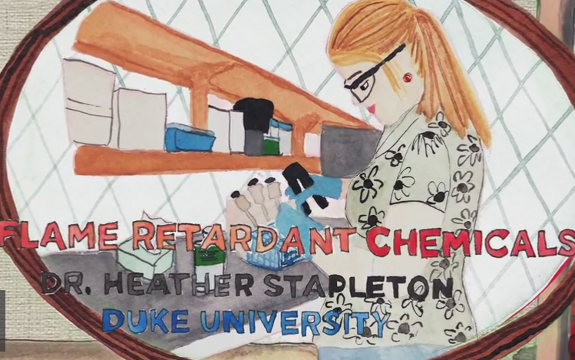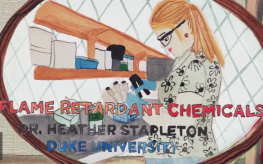Avoiding Toxins in Flame-Retardant Household Products

 There are many toxins we live with on a daily basis. Some of them are obvious, like the smog in big-city traffic. Others, however, are not so apparent. Flame-retardant chemicals are likely in your home and have been linked to very serious negative health outcomes. Avoiding them can be difficult as they aren’t only in small cleaning products, like some toxins, but are found in your furniture and carpeting. They are even said to reside in 80% of baby products.
There are many toxins we live with on a daily basis. Some of them are obvious, like the smog in big-city traffic. Others, however, are not so apparent. Flame-retardant chemicals are likely in your home and have been linked to very serious negative health outcomes. Avoiding them can be difficult as they aren’t only in small cleaning products, like some toxins, but are found in your furniture and carpeting. They are even said to reside in 80% of baby products.
Linked with infertility and even cancer, flame retardants aren’t all they’re cracked up to be. One recent study found that children exposed to such toxins while in the womb had a greater risk of neurodevelopmental delays in early childhood. The compounds called polybrominated diphenyl ethers (PBDEs) were linked to poor attention, lowered IQ, and decreased motor skills.
These toxins are especially prevalent since California passed laws requiring them in some products back in 1975. The idea was that by soaking carpeting, furniture, mattresses, and more with the flame retardants, home fires could be prevented. It didn’t work, but it did serve to put disastrous chemicals in the bodies of the people living with them.
Recently, California changed that law and now allows manufacturers to create products without the flame retardants. This state law did much damage as manufacturers nationwide adhered to it so their products could be sold in the big market that is the state of California. Now, for those of us who can afford all new carpet and all new furniture, alternatives exist.
If you see a tag on your furniture referring to its adherence to TB-117, or California’s Technical Bulletin 117, your furniture contains these toxic flame retardants. If it contains polyurethane foam, there are likely flame retardants present as well. Basically, if your furniture or carpet was made between 1975 and 2013, it probably contains them. New labels will include language about adhering to “TB117-2013” referring to the year the law was changed.
If you’re in the market for new furniture, look for furniture made of wood or wicker, or less flammable materials like leather and wool. Padding made of down, wool, and polyester fiberfill are alternatives to the polyurethane foam that nearly always contains flame retardants.
If you choose to re-carpet, do it carefully. Isolate the room you are working on a clean thoroughly when you are done to make sure all of the toxins from your carpet and padding are removed. Look for non-flame retardant carpet or other materials like vinyl or hardwoods.
Most Americans can’t afford to refurnish their home in an effort to eliminate toxins. But at some point, things must be replaced. Knowing what to look for when that time comes helps ensure you won’t be putting your family at risk.
Additional Sources:
